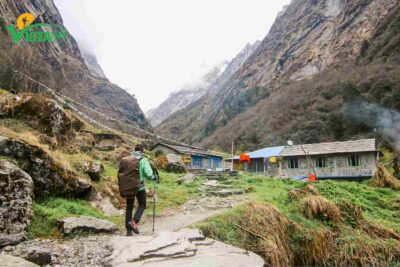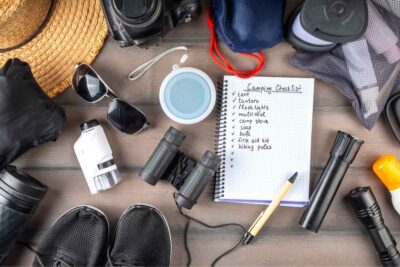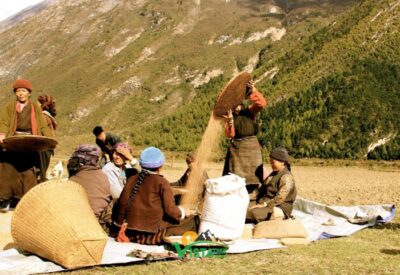Trekking is one of the most exciting ways to connect with nature, test your physical limits, and create unforgettable memories. But new hikers frequently encounter a number of difficulties that can make an incredible experience into a tense distress. Some common blunders made by novices include disregarding appropriate preparation and underestimating weather conditions.
In this blog, we’ll explore the most frequent mistakes that most first-time trekker makes—and how you can avoid them for a safe, enjoyable, and unforgettable trekking experience.
Not Doing Proper Research
One of the biggest errors beginners make is heading out without doing enough research. Trekking is more than picking a scenic destination and setting off—it requires knowledge of the trail, climate, terrain, and local rules.

Why It’s Important:
- Trails may appear easy on paper, but can be physically demanding in reality.
- The weather can change drastically depending on the time of year and region.
- Permits, guide requirements, and trail closures vary by location.
How to Avoid This Mistake:
- Read travel blogs, forums, and official trekking websites.
- Watch vlogs or documentaries about your chosen route.
- Check weather forecasts for the area and time of year.
- Speak with experienced trekkers for first-hand insights.
Recommended Packages: Nepal Tour
Improper Packing
Another major issue is packing either too much or too little. Overloading your backpack makes trekking exhausting, while missing key gear can be risky.

Why It’s Important:
- Extra weight slows you down and drains your energy.
- Missing essentials like rain gear or a first-aid kit can be dangerous.
- A poorly packed or oversized bag can throw off your balance.
How to Avoid This Mistake:
- Follow the “less is more” rule—only pack the essentials.
- Include trekking shoes, comfortable clothes, water, snacks, rain gear, and a basic first-aid kit.
- Use a lightweight backpack with proper weight distribution.
- Keep frequently used items (such as water, a map, and snacks) easily accessible.
Recommended Packages: Private Day Tours in Nepal
Underestimating the Weather
First-time trekkers often assume the weather will stay the same throughout the day. In mountain regions, this is rarely true.
Why It’s Important:
- The weather can shift dramatically in a matter of hours.
- Sudden changes can lead to rain, snow, or extreme temperature drops.
- Poor weather increases the risk of injuries, hypothermia, or heatstroke.
How to Avoid This Mistake:
- Always check the forecast before you leave.
- Dress in layers to adapt to changing conditions.
- Carry rain gear regardless of the forecast.
- Start early to avoid late-afternoon storms or fog.
Recommended Read: Trekking Season in Nepal
Disrespect to Local Culture and Nature
Many trekking routes pass through rural or culturally sensitive areas. Failing to respect local customs or the environment can cause conflict and harm the ecosystem.

Why It’s Important:
- Some trails have spiritual or cultural significance.
- Littering damages the environment and wildlife.
- Respect ensures trails remain open and welcoming for future trekkers.
How to Avoid This Mistake:
- Learn basic local customs and greetings.
- Ask permission before photographing people or religious sites.
- Practice “Leave No Trace”—carry all your trash and avoid disturbing nature.
- Support local businesses by hiring local guides or buying locally made items.
Recommended Package: Bhutan Luxury Tour for 05 Nights 06 Days
Ignoring Proper Guidelines
Each trek comes with its own set of rules and safety protocols. Many beginners ignore these due to overconfidence or a lack of awareness.
Why It’s Important:
- Guidelines are designed to keep you safe.
- Some trails have restricted zones to protect wildlife or sacred sites.
- Ignoring rules can result in fines or legal trouble.
How to Avoid This Mistake:
- Read and follow all posted rules before starting your trek.
- Stick to marked trails—avoid shortcuts or closed paths.
- Follow regulations for fires, waste disposal, and wildlife observation.
- Hire a guide when required or recommended.
Neglecting Physical Preparation
Trekking is physically demanding. The degree of fitness needed is sometimes underestimated by beginners, which can result in fatigue, accidents, or even altitude sickness.
The Significance of It:
- Long hikes with steep ascents and descents are common in treks.
- Joint pain, cramping, and exhaustion might result from ill preparation.
- Changes in altitude can affect energy levels and respiration.
How to Prevent Free of This Error:
- Begin training 4–6 weeks before your trek.
- Practice hiking on hills or uneven trails with a loaded backpack.
- Do strength training (squats, lunges, planks) and cardio (running, cycling).
- If trekking at high altitudes, acclimate gradually before the main trek.
Recommended Packages: Nepal & Tibet EBC Tour 12 Days
Neglecting Nutrition and Hydration
Fueling your body with the right food and staying hydrated is crucial on the trail. Many first-timers either don’t eat enough or rely on junk food.
Why It’s Important:
- Food provides energy to keep you going on long treks.
- Dehydration can cause fatigue, dizziness, or even altitude sickness.
- Processed snacks may upset your stomach and offer little nutrition.
How to Avoid This Mistake:
- Eat a balanced meal before your trek that includes protein, complex carbohydrates, and healthy fats.
- Bring nutritious snacks like energy bars, nuts, and dried fruits.
- Drink water regularly—even before you feel thirsty.
- Avoid alcohol and caffeine, as they increase the risk of dehydration, especially at altitude.
Conclusion
Instead of being filled with regret and suffering, your first journey should be an exciting and enlightening experience. You can steer clear of the typical blunders that most novice hikers make by researching the area, packing sensibly, practicing appropriately, being mindful of the environment, and paying attention to your body.
Mistakes are part of learning, but with a little awareness and planning, you can make your first trek a smooth and unforgettable journey. So, lace up your boots, stay mindful, and take your first steps into the world of trekking with confidence!
Let Vista Trek help you navigate your first trekking journey safely and successfully—so you can focus on making memories, not mistakes.
FAQ’s
What are the most common mistakes first-time hikers make?
Some common mistakes include not checking the weather, wearing inappropriate clothing, poor research, packing too much or too little, not staying hydrated, and ignoring trail rules.
What are the disadvantages of trekking?
Disadvantages include the risk of injuries, unpredictable weather, high physical demands, and the cost of gear and permits.
How do I prepare my body for trekking?
Start walking or hiking regularly, do leg-focused workouts, and train in different weather conditions to build strength and endurance.
What should you avoid when hiking?
Avoid overpacking, wearing improper footwear, walking at inconsistent speeds, not knowing how to use your gear, and forgetting essentials.
What happens to your body after trekking?
Your body may experience fatigue, soreness, and dehydration, especially at high altitudes. Recovery is crucial, including stretching, rest, and rehydration.
How do you not get tired when trekking?
Get ready ahead of time by training frequently, packing a light backpack, eating and drinking frequently, and developing a steady walking rhythm.
Does trekking have any health benefits?
Indeed! Trekking strengthens muscles, increases endurance, improves mental health, and strengthens the heart.


